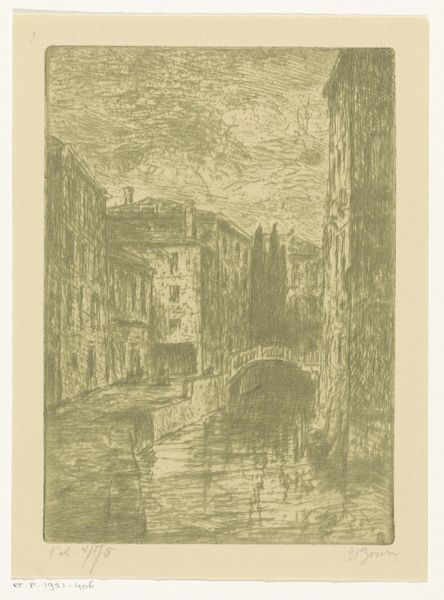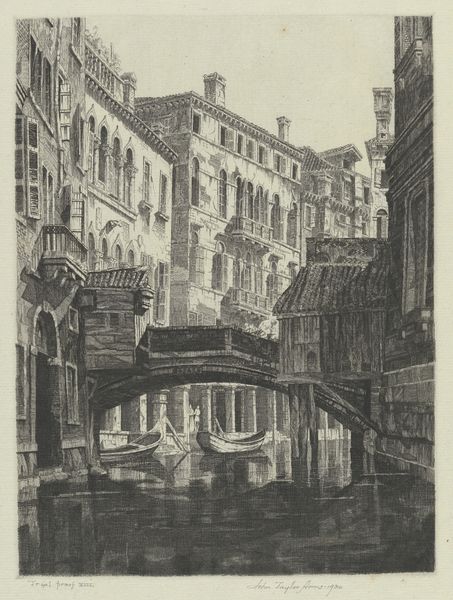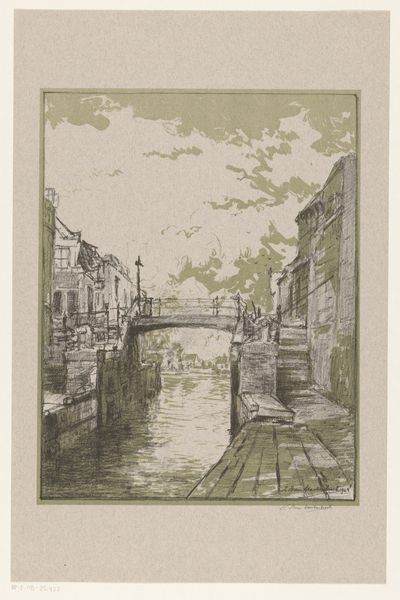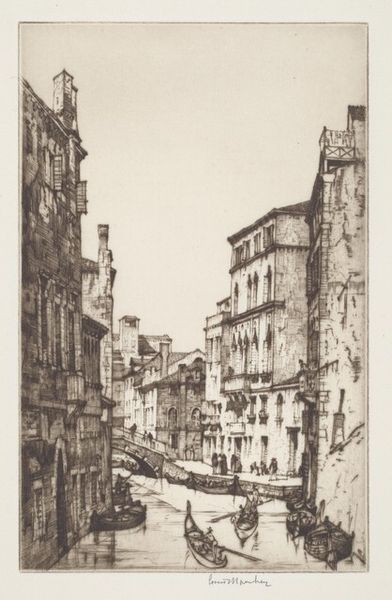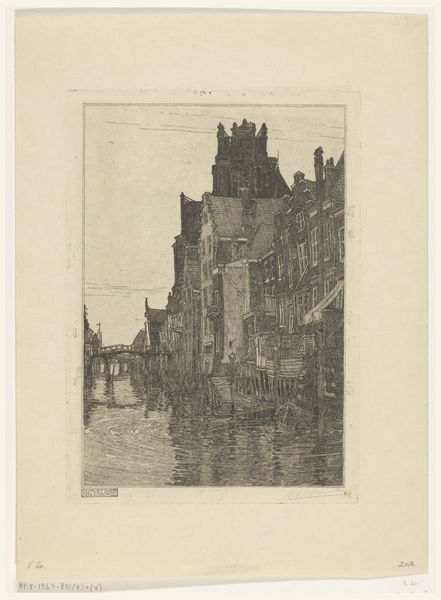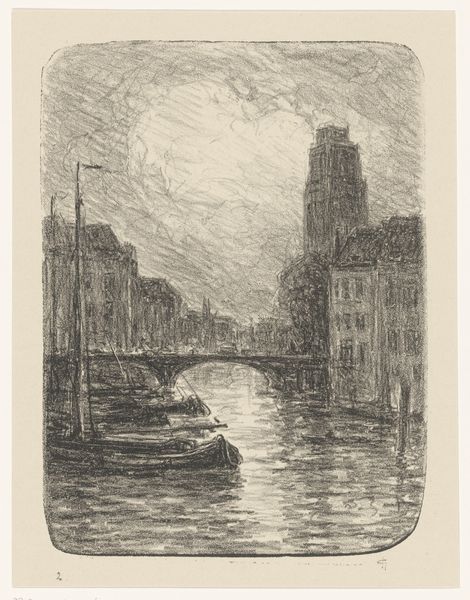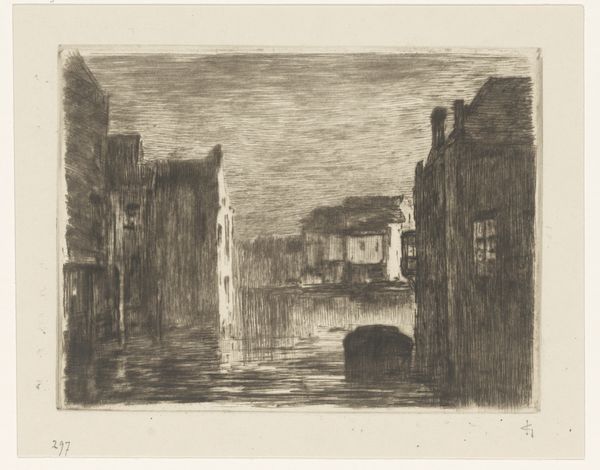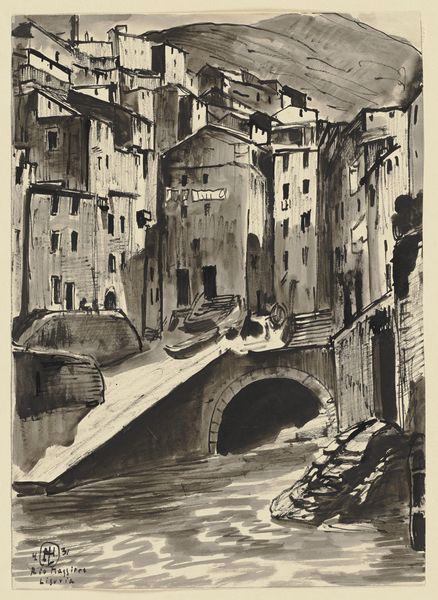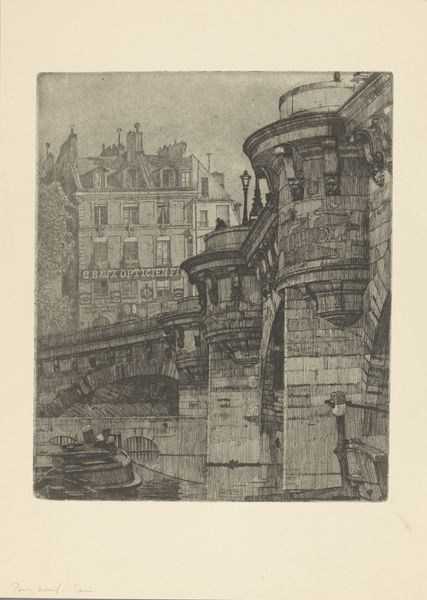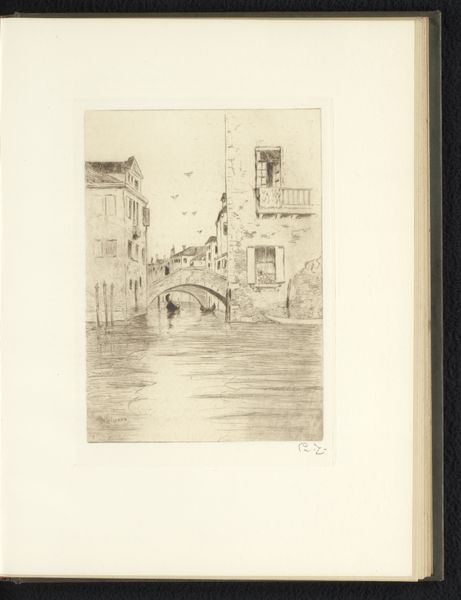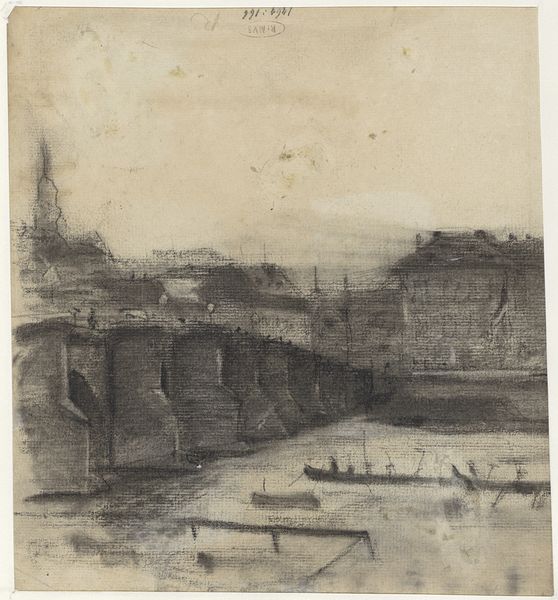
drawing, print, paper, ink
#
drawing
# print
#
landscape
#
paper
#
ink
#
cityscape
#
realism
Dimensions: height 192 mm, width 113 mm
Copyright: Rijks Museum: Open Domain
Editor: So, this is Willem Wenckebach's "De Beuling Sluis te Amsterdam," made sometime between 1870 and 1926. It's a drawing and print made with ink on paper. The narrow cityscape, especially the reflections in the water, are mesmerizing, almost dreamlike. How do you interpret this work? Curator: The dreamlike quality you observe invites us to consider Amsterdam, and urban environments more generally, not just as physical spaces but as social constructions reflecting power dynamics and lived experiences. Consider how the narrow perspective might represent the constricted opportunities for certain populations within a rapidly industrializing city. Who gets to navigate those streets freely, and who feels hemmed in by the city's structure? Editor: That's interesting, I hadn't thought about it in terms of social stratification. The reflection in the water almost creates another world—is that relevant? Curator: Absolutely! Water has long been used as a symbolic element, representing the unconscious, fluidity, and also—importantly, in the context of a port city like Amsterdam—commerce. Do you think Wenckebach is perhaps making a statement about the flow of capital and its impact on the lives of Amsterdam's citizens? Is the reflection a distorted version of reality? Editor: It does seem a bit murky. Almost like something's being hidden. I see what you mean about power dynamics too. You can't even see people except for those small figures in the distance. It makes you wonder about their place in it all. Curator: Exactly! By focusing on the infrastructure rather than the inhabitants, Wenckebach subtly directs our attention to the structures that shape human experience. What narratives might be obscured when we only focus on the canals and buildings? Editor: I think I get it. It’s more than just a pretty picture of Amsterdam. It speaks to the unseen forces at play within the city. I'll never look at cityscapes the same way! Curator: Wonderful. And it illustrates the exciting possibilities that emerge when we start reading art through the lenses of social history and critical theory.
Comments
No comments
Be the first to comment and join the conversation on the ultimate creative platform.
